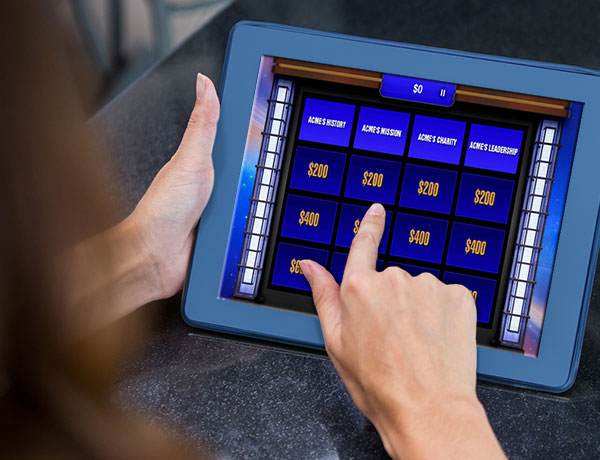Employee training is expensive and, often, the return on investment (ROI) doesn’t exist. The Association for Talent Development (ATD) estimates that companies spent an average of $1,273 per year per employee on training. However, without “practical follow-up or meaningful assessments,” learners lose 90% of the skills they learn in those training programs. That’s a lot of money to throw out the window.
Gamified training engages learners, increases attention, improves confidence and, ultimately, drives success.
Here are 10 ways incorporating employee training games into your learning and development can save you money and increase your ROI.
1. Games Improve Engagement and Retention
According to the National Training Laboratories passive training (lectures, reading, and videos) results in 5-20% retention rates while active training (learning through games and simulations) can deliver retention rates as high as 90%. Why are games so much more effective? Because they are much more fun and engaging than death by PowerPoint
2. Games Provide Feedback and Rewards
Charles Duhigg, author of “The Power of Habit,” explains that in order to change a habit, we must first set a goal and then reward ourselves for accomplishing it. Training games provide a playground for employees to practice predefined goals and earn rewards. They also give trainers an opportunity to provide feedback and encourage repeat plays, improving performance and increasing knowledge retention along the way.
3. Games Can Be Played Anywhere
Mercer’s 2018 global talent trends survey found that “most employees want their company to offer more flexible work options.” With the increase in flexible work, employees also need more flexible learning. Training games can be deployed on phones, tablets, computers, and kiosks, enabling employees to play and learn when and where they want. Organizations can deploy training games on phones, tablets, computers, and kiosks.
4. Games Are Perfect for Microlearning
As humans, we tend to have short attention spans. Creating games is the best way to provide quick yet effective training. Three-to five-minute games can drive home key points of and when designed right keep learners coming back over and over again. Sometimes the best training games are fun and fast, helping learners digest your message and improve prescribed skills. Everyone is under ever-increasing time pressures. Breaking up their training content into bite-sized game-based experiences that they can access between tasks can help keep their attention and result in better learning.
5. Games Provide Data
Simply checking a box or using a five-question assessment at the end of a course isn’t effective in measuring learning. Games can unveil patterns of individual and group engagement and improve training ROI by revealing knowledge gaps, individual behaviors, and group comparisons. It’s simply impossible to obtain this same kind of analysis in an instructor-led or classroom method. Game analytics can show behavioral trends (what paths do players take, how do they engage with different characters, how do they approach different situations, etc.). The more you can learn about employees, the more you can identify where they need additional help and how can your organization can leverage their skills more effectively.
6. Games Provide a Practice Playground
Games are a remarkable tool for teaching and testing employees about products and processes, critical thinking, collaboration and interpersonal skills, and problem-solving. They provide a safe place to experiment and fail. We call this a “practice playground” where learners can make mistakes in a judgment-free zone.
7. Games are Social and Collaborative
75% of employees say that being collaborative is very important. Games are a fantastic medium for healthy competition and collaboration. So much so that, 54% of the gamers report playing with others, stating that video games help them connect with friends and family.
8. Games Bring Learning Back Again & Again
Games tap into our competitive nature as humans. Employees will return to the training games repeatedly to increase their score and raise their name on the leaderboard. The more they play the game, the more they are learning.
9. Games are Entertaining and Can Have Characters and Stories That Learners Care About
Learners connect with and recall content when it is presented as a story. The presentation of the story helps learners to visualize themselves in the same situation. Research has found that training games, which require learners to practice by doing, can have a significant positive impact on training outcomes.
10. Games are Perfect for Training Live Events
Effective instructor-led training is not about being the “sage on the stage”–it’s about being the “guide on the side,” leading participants to water instead of blasting them with the fire hose. Games are a fantastic way to engage your learners in company meetings and training conferences. Our Motivate Meeting tool makes live and virtual meetings easy for presenters and engaging for audiences.
How can we help you be a training hero?
Email us to discuss your next project.



